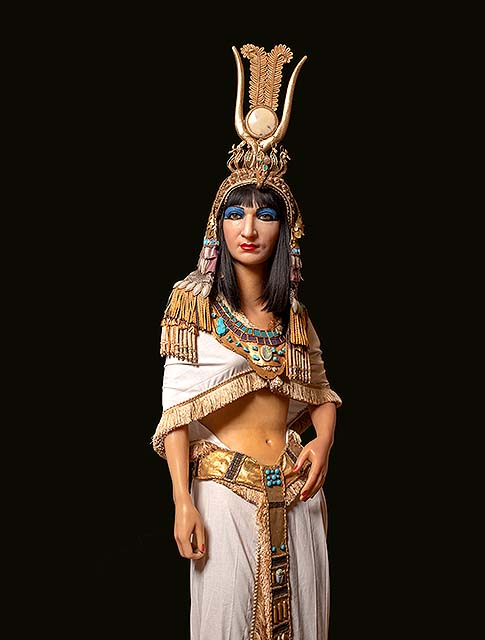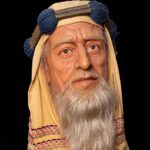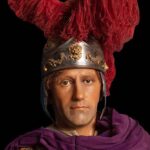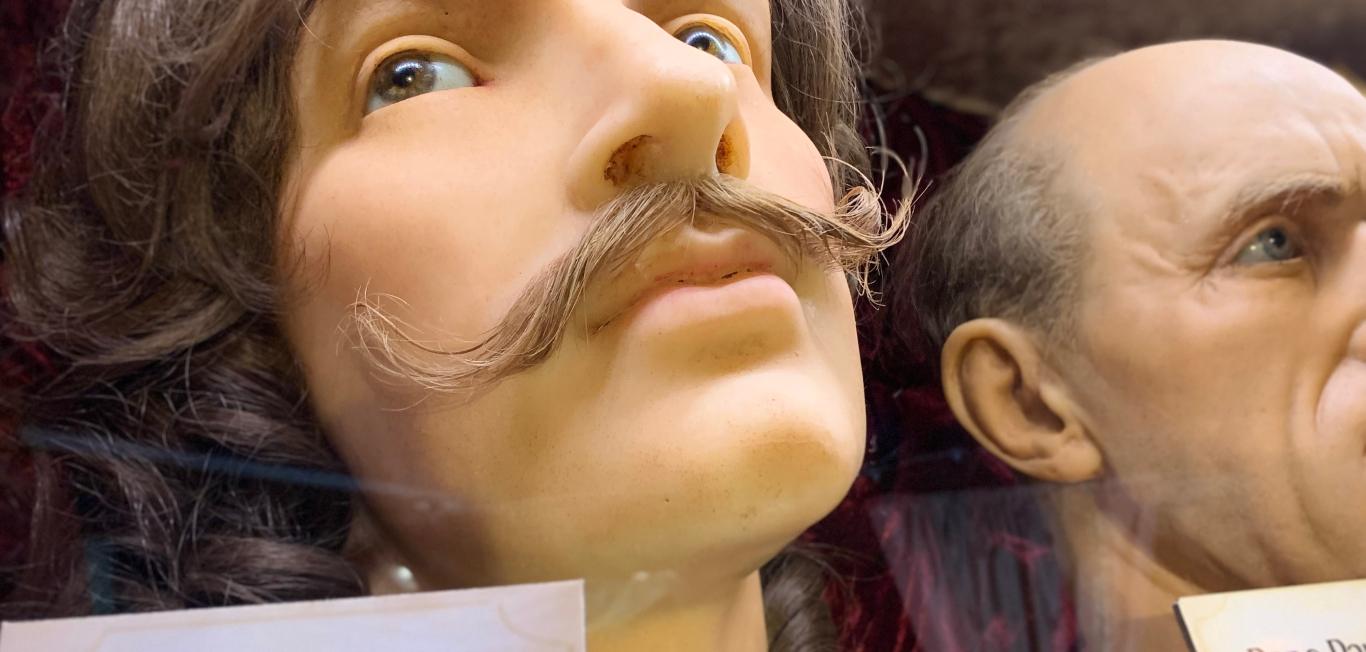Who is
Cleopatra?
The history of Cleopatra is compelling. From 51 to 30 BC, Cleopatra VII Philopator served as the last queen of Egypt of the Ptolemaic Kingdom. Cleopatra belonged to the Ptolemaic dynasty and was a direct descendant of Ptolemy I Soter, a friend of Alexander the Great, the Macedonian Greek general. Egypt became a province of the Roman Empire following Cleopatra’s death. This ended one of the last Hellenistic kingdoms and the period that had spanned from the rule of Alexander the Great.
DID YOU KNOW?
Cleopatra was the only Ptolemaic monarch to study Egyptian; her original tongue was Koine Greek.
When Ptolemy XII Auletes was forced into exile to Rome in 58 BC due to an uprising in Egypt, his daughter Berenice IV took the throne. Cleopatra is thought to have traveled with her father during this time. The combined rule of Cleopatra and her brother Ptolemy XIII began with their father’s death in 51 BC, but a dispute between them resulted in an outright civil war. Ptolemy XIII died in the 47 BC Battle of the Nile shortly after the siege was broken; Cleopatra’s half-sister Arsinoe IV was exiled to Ephesus for her part in the blockade. Caesar established joint rule for Cleopatra and her brother Ptolemy XIV while maintaining a relationship with Cleopatra. Caesar and Cleopatra had a son who they named Caesarion.
In 46 and 44 BC, Cleopatra visited Rome and lived in Caesar’s house. She appointed Caesarion co-ruler with Ptolemy XV following the 44 BC assassinations of Caesar and Ptolemy XIV (per her instruction). Cleopatra supported the Roman Second Triumvirate, which was made up of Octavian, Mark Antony and Marcus Aemilius Lepidus, Caesar’s grandnephew and heir, in the civil war between the Liberators in 43–42 BC. The queen had an affair with Antony when they met in 41 BC in Tarsus. At her urging, he executed Arsinoe, and during his conquests of the Kingdom of Armenia and the Parthian Empire, he grew more and more dependent on Cleopatra for financial support and military assistance.
Alexander Helios, Cleopatra Selene II and Ptolemy Philadelphus were several proclaimed rulers under Antony’s Triumviral control of provinces due to the Donations of Alexandria. The final battle of the Roman Republic was brought about by this incident, their marriage and Antony’s divorcing of Octavian’s sister. In 32 BC, Octavian waged a propaganda war, expelled Antony’s supporters from Rome and launched war on Cleopatra. The naval fleet of Antony and Cleopatra was destroyed at the Battle of Actium in 31 BC, and in 30 BC, Octavian’s armies invaded Egypt and defeated Antony, forcing him to commit suicide. Cleopatra also committed suicide after learning that Octavian intended to take her along for his triumphal procession in Rome.
DID YOU KNOW?
The naval fleet of Antony and Cleopatra was destroyed at the Battle of Actium in 31 BC.
Interesting Cleopatra Facts
Cleopatra was the last ruler of the Ptolemaic dynasty.
The Ptolemaic dynasty’s final ruler was Cleopatra. Cleopatra was not an Egyptian, even if she was born there. She was descended from the Macedonian Greek royal family known as the Ptolemaic dynasty. She was an ancestor of Alexander the Great’s comrade and general Ptolemy I “Soter.”
Cleopatra married two of her brothers.
Ptolemy XIII, Cleopatra’s brother and fellow monarch, was 10 years old when they got married (she was 18). When Ptolemy attempted to remove his sister in 48 BC, she was forced to run off to Syria and Egypt. Cleopatra wed Ptolemy XIV after Ptolemy XIII died after being overthrown by her Roman-Egyptian armies. Ptolemy XIV was 12 and she was 22. Cleopatra ended up living with Caesar privately, and served as his mistress even after they got married.
She was highly intelligent and well-educated, and her beauty was the product of Roman propaganda.
She was very brilliant and well-educated, and Cleopatra is recognized in medieval Arab sources for her work as a mathematician, chemist and philosopher. She allegedly wrote scientific books. She spoke between five and nine languages, including her native Greek, Egyptian, Arabic and Hebrew, according to historical records.
She was in Rome when Caesar was killed.
When Caesar was assassinated in 44 BC, Cleopatra was Caesar’s mistress and was residing in Rome. She fled across the Tiber with their son after Caesar’s murder, for her life was at risk. When Cleopatra got back to Egypt, she started establishing her power right away. After poisoning Ptolemy XIV with aconite, she succeeded him with her son.
She used her image as a political tool.
Cleopatra was acutely aware of the connection between image and power and thought of herself as a living goddess. At ceremonial gatherings, she would dress as the goddess Isis and make an appearance. She also surrounded herself with luxury.
She was a popular pharaoh.
As the last queen of Egypt, Cleopatra identified as a profound Egyptian pharaoh in contrast to her Ptolemaic ancestors, who spoke Greek and followed Greek customs. She studied the Egyptian language and had portraits of herself painted in the Egyptian technique. She gained her countrymen’s respect as a result.
She was a strong and successful leader.
Egypt was the richest country in the Mediterranean during Cleopatra’s rule and the last to maintain its independence from the quickly enlarging Roman Empire. Cleopatra developed the Egyptian economy and increased trade with Arab countries to elevate Egypt’s position as a major trading nation.
Cleopatra’s eyeliner was beneficial for health maintenance.
The name Cleopatra translates to ‘glory of her father’.
Cleopatra believed scents could hold power over people and influence them.
Early Life
of Cleopatra
Ptolemy XII, who ruled as king of Egypt for nearly 40 years, was the father of the Egyptian Queen Cleopatra. History puts her birth year at 69 BC, despite disagreements on the date and circumstances of her birth. Cleopatra was born in Alexandria, Egypt and brought up in the Palace of Alexandria, where she was educated in Hellenistic Greek by Philostratus, also known as “the Athenian,” a well-known Greek sophist. Cleopatra studied philosophy and oratory under this instructor. She had a multilingual education. She was known to be a fluent speaker of both ancient Greek and Egyptian.
DID YOU KNOW?
Cleopatra was fluent in the primitive tongues; she rarely needed translation, a skill that complemented her independent spirit.
Her broad knowledge included everything from Egyptian history to Greek medicine. Due to her enlightened position, Cleopatra participated in a variety of religious and social rituals, such as a trip to Hermonthis to oversee the erection of a sacred Buchis bull acting as a conduit for the Egyptian god Montu. This was her first official act as Queen of Egypt. Her magnificent rituals did not take place prior to Ptolemy XII, and much of the royal family had been exiled as a result of their inaction in the wake of their king’s brother, Ptolemy of Cyprus, who committed suicide after being overthrown by Roman forces. While her father was expelled from Egypt due to unrest in 58 BC, Cleopatra’s older sister Berenice IV rose to power and seized the throne. Her father, however, had not yet given up and had instead enlisted the aid of Roman troops. As Roman Aulus Gabinius’ army advanced on Alexandria in 55 BC, Ptolemy XII arrived. By 51 BC, he had taken the kingdom back from Berenice IV and her husband of Pontic ancestry, Archelaus.
Last Queen of Egypt
The conflict between Cleopatra VII and her young brother for the throne of Egypt was not going as well as she had intended. After Cleopatra attempted to establish herself as the only ruler in 49 BC, Pharaoh Ptolemy XIII, who was also her husband and, in accordance with the conditions of their father’s will, her co-ruler, drove his sister from the palace at Alexandria. The queen, who was then in her early 20s, escaped to Syria before coming back and assembling a rebel army near the capital.
When Ptolemy XIII perished in the Battle of the Nile in 47 BC, Cleopatra once more became the monarch, but this time she reigned alongside her other brother Ptolemy XIV. According to legend, Ptolemy XIII perished in the Nile River after the 15-year-old king was defeated by Caesar’s superior tactics and strategy. Now that Caesar had full authority over Egypt, Cleopatra VII and her 13-year-old brother Ptolemy XIV Theos Philopator II were immediately restored as co-rulers.
Ptolemy Caesar, commonly known as Caesarion, was born to Queen Cleopatra less than a year later. While dwelling in the Horti Caesaris, Caesar’s estate, Cleopatra and her co-ruling brother were dubbed “friend and ally of the Roman people” by 46 BC, a designation that was hotly disputed by the Roman citizens. Even though every effort was made to win over the Roman Senate to Cleopatra, there was turbulence that resulted in Caesar’s assassination.
DID YOU KNOW?
Cleopatra and her co-ruling brother were dubbed "friend and ally of the Roman people".
Descendants of Cleopatra
The mother and father of Cleopatra were both offspring of the same father, one by a wife and the other by a mistress. Egyptian queen Cleopatra’s family tree consequently contains fewer branches, some of which are unidentified.
As the last queen of Egypt, Cleopatra wed two of her own brothers (a norm in the royal line), triumphed over Ptolemy XIII in a civil war, was a mistress of Julius Caesar and had a child with him (Caesarion, Ptolemy XIV) and eventually found and wed Mark Antony. Cleopatra’s suicide marked the end of her rule.
Late
in Life
Cleopatra and Caesarion left Rome after Caesar’s murder in 44 BC and went back to Alexandria. Mark Antony, Caesar’s right-hand man, collaborated with his grandnephew Octavian and ally Lepidus to track down and overthrow the assassination plotters. Following the Battle of Philippi, where Antony and Octavian’s forces triumphed over Brutus and Cassius, Antony took control of the eastern provinces, including Egypt, and Octavian maintained control of the western provinces.
DID YOU KNOW?
Egyptian queen Cleopatra was the last queen of Egypt.
Cleopatra was called to Antony’s court in Tarsus in 41 BCE to answer to allegations that she had helped Brutus and Cassius. By delaying her arrival, and then delaying it some more, Cleopatra made it obvious that as queen of Egypt, she would arrive at her own convenience. Even though Egypt’s economy was on the verge of collapse at the time, Cleopatra made sure to portray herself as a true ruler by arriving in style on her boat, appearing as Aphrodite.
Cleopatra and Mark Antony fell in love immediately, and their relationship lasted for the next 10 years. Despite being married twice — first to Fulvia and then to Octavia, Octavian’s sister — he still considered her his wife because she gave birth to three of his children: Cleopatra Selene II, Alexander Helios and Ptolemy Philadelphus. In order to legally wed Cleopatra, he later divorced Octavia. Antony and Octavian’s relationship deteriorated over the course of these years. Octavian was appalled by Antony’s actions, particularly the disdain he showed to his family.
At the Battle of Actium in 31 BCE, Octavian’s forces beat Cleopatra and Antony’s army after a series of battles that almost always went in his favor. After learning that Cleopatra had indeed perished, Antony stabbed himself. He discovered that she was still alive too late, so Octavian allowed him to be taken to the queen, where he passed away in her arms. The conditions of her defeat were subsequently explained to her during an audience that Octavian then demanded with the queen. The conditions were not good, and Cleopatra was aware that she would be taken as a prisoner to Rome in order to beautify Octavian’s victory. Cleopatra requested extra time so that she could be ready because she knew she wouldn’t be able to influence Octavian the same way she did Caesar and Antony. She then poisoned herself. Some scholars say she let an asp or Egyptian cobra bite her. The Ptolemaic line of Egyptian rule came to an end when Octavian had her son Caesarion assassinated. He then took her and Antony’s children to Rome where they were fostered by Octavia.
DID YOU KNOW?
After learning that Cleopatra had indeed perished, Antony stabbed himself. He discovered that she was still alive too late.
FAQs
How old was Cleopatra when she died?
39 years old.
Who ruled Egypt after Cleopatra?
Ptolemy XV Caesarion, the oldest son of Cleopatra and Caesar’s son. He reigned for 18 days before Octavian ordered his capture and execution.
Why is Cleopatra famous?
She was the last queen of Egypt.










